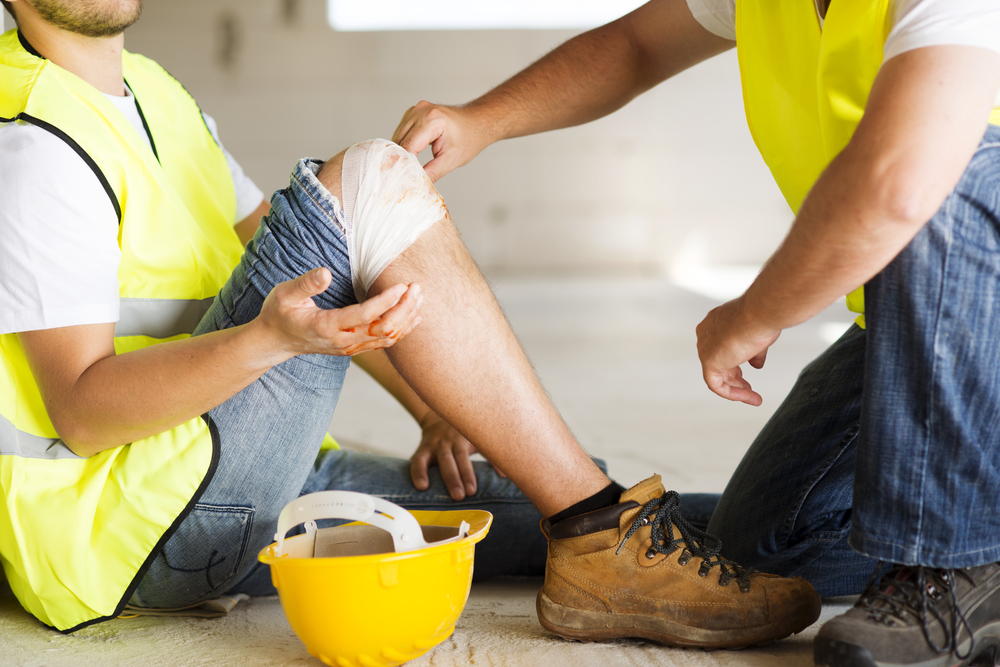Hints & Tips

How Can Employers Effectively Assess Slip Risks in Workplaces?
Slip risks in work that go unnoticed or ignored are one of the major causes of accidents in the workplace. Liquids such as water, oil and grease can create havoc and is something you will need to keep a close eye on to ensure no employee is at risk of a fall. How can you access slip risk to ensure your business doesn’t get into any avoidable situations?
Be aware of The Workplace (Health, Safety and Welfare) Regulations. In this 1992 released document, it explains that a floor must be in a good condition for people to work around. It’s also essential that there are no obstacles in an area where employees regularly walk through. These can include boxes, machinery and anything else which can cause issues in a workplace. In total, these accidents can cost employers over £512, which is a figure you can’t ignore.
The main causes of workplace slips and falls are as follows:
- Uneven carpeting or floor coverings.
- Wet, slippery floors.
- Damp floors that can cause friction and trips.
- Floor level alterations.
- Low lighting in areas, especially stairways.
- Items that are blocking walkways such as boxes, crates, etc.
- Uncovered wiring for lighting, machines, etc.
It’s important that you follow simple practices to keep a working environment safe. Request that every employee follows these tips to reduce the risk of falls and accidents:
- If anything is spilt, make sure they clean it up immediately.
- Require all employees to wear suitable footwear in the workplace.
- Make sure all cables are well organised and hidden under desks or fitted flooring panels so that they aren’t an easy trip hazard.
- If a workplace has different rugs or other coverings, make sure they are secured and fixed on your flooring to avoid movement.
- Research the right ingredients to help clean your flooring. Using the wrong ones could result in a material not completely drying or becoming damaged, increasing the risk of slips.
- Include large lights in areas where they could be darkness such as hallways, stairs and other places where flooring might be uneven.
The HSE have recommended a step by step method to access the slip and trip risks and they are as follows:
- Have a look around the workplace to spot any risks that people often ignore. These can be floors in poor condition, uneven levels, weather-effected outdoor flooring, loose wires and spillages.
- Try and imagine a situation where someone could experience a fall. How could this happen? What are the steps you can take to avoid a risk? Which department could suffer the most accidents and why? The more you analyse a situation, the better you’ll be preventing workplace injuries.
- If not removable obstacles, then which flooring or surfaces have subtle or visible issues that have been forgotten? Do you even have regular cleaners to help clear waste that could cause trips and do you have inspections that take place throughout the building?
- Once an assessment strategy is put into place, make sure you keep it regular so you can keep on top of health and safety. If any damage to flooring occurs, make sure you document it so when it’s time for the next assessment, you already have key issues logged down.
Many businesses use the ramp test created by The HSL which is designed to tilt a surface to give a clear example of the slip risks. A harnessed individual is required to stand on the surface while the machine alters the level. You can also choose to have this test combine other factors such as flooring type, spills, footwear and more. This is a brilliant method that could help you choose the appropriate flooring based on the type of business operations.
If you require a safety flooring installation in different areas within your workplace, we can help supply and fit the area with heavy duty vinyl flooring designed for safety purposes that offers sufficient slip resistance. We have a broad selection of designs, so contact us today on 01244 682 100 or drop us a quick enquiry.
Comments are closed here.